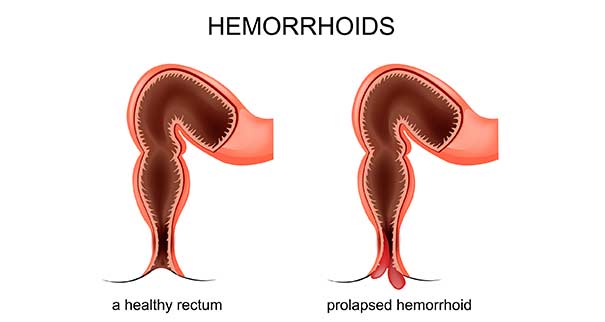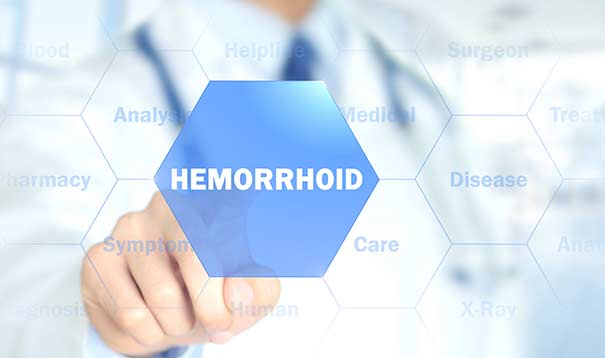Hemorrhoid Specialist

Swollen veins in the lower portion of the anus and rectum known as hemorrhoids can be extremely painful.
More common in pregnant women and in individuals with chronic constipation, hemorrhoids will affect about half of all adults in the United States before age fifty. The good news is that this type of irritation is treatable and, in many cases, preventable.
But if piles aren’t going away on their own or you are experiencing painful symptoms and bleeding, it’s time to seek medical attention. Here are five reasons why you may benefit from a visit to a hemorrhoid specialist.
1. Getting an Accurate Diagnosis
External hemorrhoids are the kind that are usually easy to detect from a visual examination. These are also the ones more likely to respond well to the use of topical medications. With internal hemorrhoids, a hemorrhoid specialistcan perform tests to make a positive diagnosis and rule out other possible sources of internal anal irritation, such as anal cancer, colorectal cancer, ulcerative colitis (UC), and anal fissures. Diagnosis typically involves:
- A review of medical history to determine if other digestive system diseases may be a factor
- Performing a digital rectal exam (DRE)
- Doing a visual inspection with an anoscopy to view the internal anal area in greater detail with a special lighted instrument attached to a camera


2. Treating Bleeding External Hemorrhoids
External hemorrhoids sometimes develop blood clots (thrombosis) inside of the swollen area. Even if bleeding isn’t happening, the clot can cause persistent or severe pain. In instances like this, a hemorrhoid specialistmay perform a simple procedure called an external hemorrhoid thrombectomy. An incision is made to drain the hemorrhoid and provide relief. It’s usually best to treat hemorrhoids with blood clots within the first 72 hours of their development.
3. Performing Minimally Invasive Surgery
If you are only experiencing mild discomfort, a specialist may recommend ointments, creams, or medicated pads. Such products usually have ingredients such as lidocaine and witch hazel. OTC treatments aren’t meant to be a long-term solution for hemorrhoids. If medication isn’t effective, minimally invasive surgery may become an option.
When a rubber band ligation is performed, rubber bands are placed around the lower part of an internal hemorrhoid. Within a week or so after the procedure, the tied-off portion usually withers and falls off. Sclerotherapy is a treatment involving an injection in the swollen tissue. The solution causes the affected vain to develop scar tissue, which forces blood to reroute to healthy veins. The collapsed vein is eventually absorbed by the body.
Coagulation techniques target internal hemorrhoids by making them harden and shrivel after being treated with a laser or infrared heat. While coagulation generally doesn’t produce that much discomfort when performed, you’re less likely to experience recurrence with a rubber band ligation.
4. Removing Problematic Hemorrhoids
Larger piles or ones that aren’t responding well to other treatment attempts may be surgically removed by a specialist. This procedure is known as a hemorrhoidectomy. During the procedure, you will be given spinal or anesthesia to ease your discomfort. The incisions are made around the hemorrhoid tissues. The swollen vein within the pile is surgically tied off to keep it from bleeding during removal. The hemorrhoid is then removed with either a scalpel, a special tool that uses electricity called a cautery pencil, or a laser. Barring any complications, it’s usually an outpatient procedure. Hemorrhoid removal is considered the most effective treatment for swollen anal veins.
5. Performing a Stapling Procedure
Another type of hemorrhoid surgery that may be performed is done with a circular stapling device. The procedure is referred to as a stapled hemorrhoidectomy. There is no need to make an incision with this procedure. Instead, the hemorrhoid is lifted and stapled into another location in the anal canal without as many sensitive nerve endings. This option is less invasive. However, there is a greater chance of recurrence. Another surgical option is referred to as a Doppler-guided hemorrhoidectomy. It’s done with a special scope that’s used to find the hemorrhoidal arteries.
A hemorrhoid specialist can’t prevent hemorrhoids from becoming a problem again, even after you’ve had surgery or been successfully treated with medication. But you can reduce your odds of developing internal or external piles by upping your fiber intake, staying hydrated to promote healthy bowel movements, focusing on low-impact and moderate-intensity exercises like swimming and yoga, and being careful with your choice of laxatives. Also, be cautious with exercises that increase abdominal pressure or involve excess straining, such as abdominal crunches or weightlifting, especially if you have a history of having problems with hemorrhoids.

